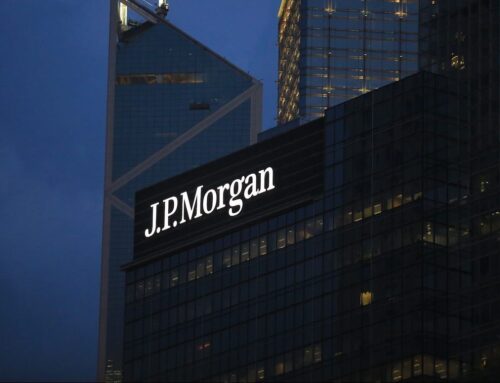Is Apple a Buy, Sell, or Hold in 2025? @themotleyfool #stocks $AAPL $MSFT $GOOGL $GOOG
January 3, 2025
Here’s the latest on the largest publicly traded company in the world.
2024 was a banner year for Apple (AAPL -0.19%), with the stock delivering a total return of 33%, and it currently holds the top spot among all publicly traded companies by market capitalization at $3.7 trillion. Given its position, investors might wonder how much room the tech giant has to grow.
So, let’s examine where Apple stands today, management’s capital allocation strategy, and its outlook for 2025 to determine whether the stock is a buy, sell, or hold.
Apple continues to impress, but growth is slowing
Apple’s latest financial results show that the tech giant continues to generate an unrivaled amount of revenue compared to its peers, with $391 billion during its fiscal year 2024. For comparison, Alphabet (GOOG 1.47%) (GOOGL 1.39%) and Microsoft (MSFT 0.74%) generated $339.9 billion and $254.2 billion during that same period, respectively.
However, Apple’s year-over-year revenue growth is slower than that of its counterparts, at only 2%, compared to 10.6% for Alphabet and 11.7% for Microsoft.
AAPL Revenue (TTM) data by YCharts
A closer look at Apple’s sales by category reveals mixed performance across its segments. iPhone sales, the company’s largest segment, reached $201.2 billion in fiscal year 2024, reflecting modest growth of just 0.3%. Meanwhile, sales in the iPad and wearables/home accessories segments declined by 5.7% and 7.1%, respectively.
The bright spot for Apple continues to be its services segment, which includes Apps and in-app purchases, subscriptions, Apple Pay, and advertisement placements. For its fiscal year 2024, Apple’s services generated $96.2 billion, equating to a year-over-year increase of 12.9%.
Despite some lumpy sales growth, Apple continues to generate a staggering amount of free cash flow, which is the amount of money after operational and capital expenditures. For its fiscal 2024, Apple generated $108.8 billion, which is a 9.3% increase from the same period last year. For comparison, Alphabet and Microsoft generated $55.8 billion and $72.7 billion, respectively, over the trailing 12 months.
Apple prioritizes returning capital to shareholders
With Apple’s robust free cash flow, management returns capital to shareholders through dividends and share repurchases. The company currently pays a quarterly dividend of $0.25 per share, equating to an annual yield of 0.4%. While the yield is relatively low compared to other dividend stocks, investors can reasonably expect annual increases for the foreseeable future, considering management has raised it for 13 consecutive years and has a low payout ratio — the percentage of profits paid out as dividends — of only 16.3%.
In addition to a growing dividend, Apple aggressively repurchases its shares, boosting each shareholder’s ownership stake without requiring additional investment. While buybacks are subject to a 1% tax, they are generally more tax-efficient than dividends, which are double-taxed — first at the corporate level and then again when paid to shareholders.
In 2024 alone, Apple reduced its outstanding shares by 2.2% and by an impressive 13.8% over the past five years. Notably, in its fiscal 2024, management spent nearly $95 billion on share repurchases and, in May, unveiled a new $110 billion buyback program.
AAPL Shares Outstanding data by YCharts
Apple is betting on AI for future growth
Like other tech giants, Apple is investing heavily in artificial intelligence (AI) as a potential source of new growth. The company spent $31.8 billion in research and development during its fiscal year 2024, up 4.9% from its fiscal year 2023. In a recent earnings call, CEO Tim Cook noted how Apple Intelligence, which is the company’s free built-in AI system for its products, “will transform how users interact with technology.”
The technology is only available on Apple’s relatively newer hardware models, which could prompt more consumers to upgrade from their current devices.
While still in its infancy stage, management believes that Apple Intelligence will grow its services revenue by “double digits” and the company’s total revenue by “mid-single digits” in its fiscal Q1 2025 compared to its fiscal Q1 2024.
Here’s the bottom line on Apple stock
Before investing in any stock, it’s essential to consider its valuation — after all, even a great company like Apple can become a poor investment if its price is too high.
One metric available is price-to-free cash flow (P/FCF), which measures a company’s market capitalization against its free cash flow. Currently, Apple trades at nearly 36 times its trailing-12-month free cash flow of $108.8 billion. Comparing this ratio to competitors’ and Apple’s historical valuation helps assess whether the stock is cheap, fairly valued, or overvalued.
AAPL Price to Free Cash Flow data by YCharts
Compared to Alphabet and Microsoft, which trade at 44 times free cash flow, Apple is less expensive. However, its current P/FCF ratio marks a five-year high. While the potential of the AI boom is exciting, much of the anticipated growth has yet to materialize, indicating that Apple’s current valuation is rich.
Despite this, Apple remains a compelling long-term investment, and current investors should consider holding. The company will continue to reward shareholders through rising dividends and share repurchases, and if its AI strategy delivers, it could pave the way for a transformative new growth phase.
Suzanne Frey, an executive at Alphabet, is a member of The Motley Fool’s board of directors. Collin Brantmeyer has positions in Alphabet, Apple, and Microsoft. The Motley Fool has positions in and recommends Alphabet, Apple, and Microsoft. The Motley Fool recommends the following options: long January 2026 $395 calls on Microsoft and short January 2026 $405 calls on Microsoft. The Motley Fool has a disclosure policy.
Search
RECENT PRESS RELEASES
Related Post






